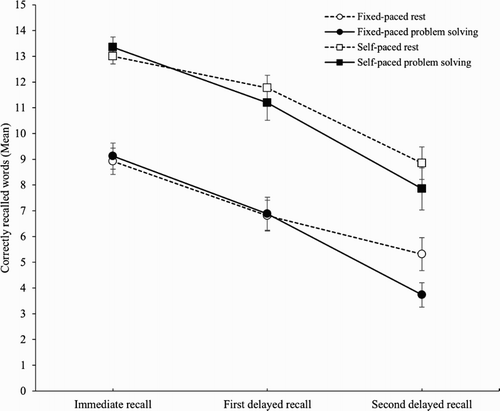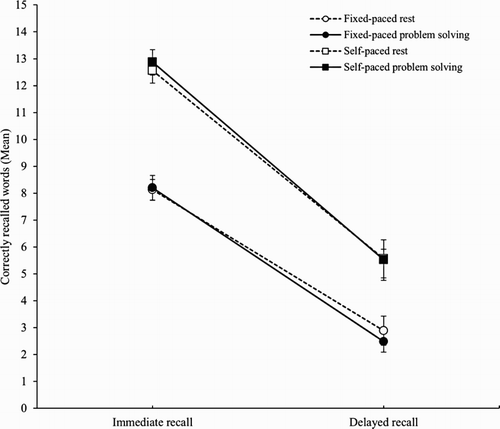Figures & data
Figure 1. Experimental procedure. Participants learned two word lists. In the fixed-paced group words were presented for 1250 ms, in the self-paced group participants themselves determined the presentation duration of each word. The critical manipulation occurred after immediate recall of the respective word list. Participants either rested wakefully or solved problems (see Method section). In Experiment 1, a first delayed free recall test took place (fixed-paced condition: after 12–24 min; self-paced condition: after 17–34 min), and again a second delayed free recall test after 7 days. In Experiment 2, only one delayed free recall test took place after 7 days. Participants were not informed about the delayed recall tests. (*) = order of the word lists and post-encoding conditions were counterbalanced across participants.

Table 1. Descriptive statistics of the mean number of correctly recalled words and mean item responses to question on conscious rehearsal (Experiment 1).
Figure 2. Mean number of correctly recalled words (max = 15 words per list) in Experiment 1 plotted separately for recall (immediate, first delayed, second delayed), study time (fixed-paced, self-paced), and post-encoding condition (rest, problem solving). Error bars represent standard errors of the mean.

Figure 3. Mean number of correctly recalled words (max = 15 words per list) in Experiment 2 plotted separately for recall (immediate, delayed), study time (fixed-paced, self-paced), and post-encoding condition (rest, problem solving). Error bars represent standard errors of the mean.

